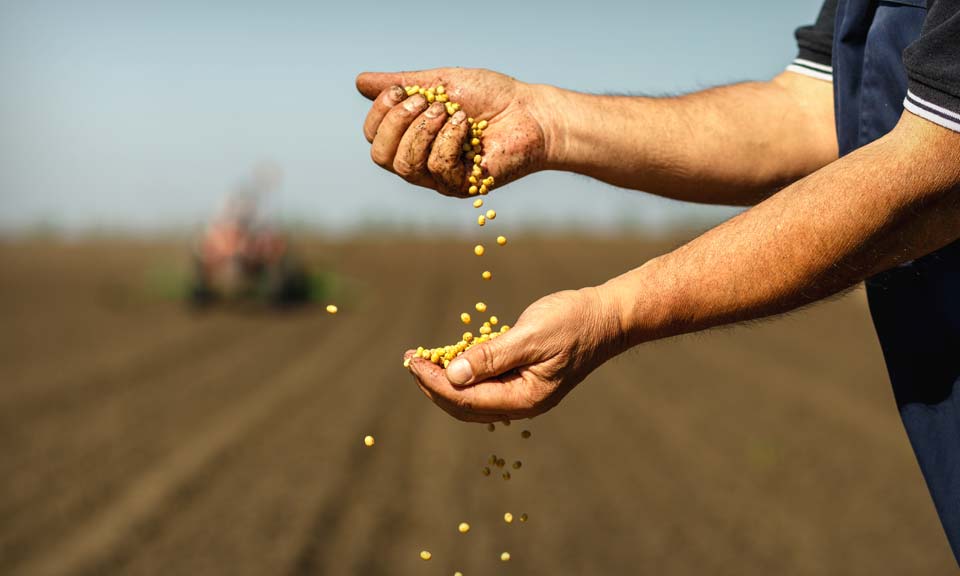Market forecasts China's 2022 soybean demand falling up to 6% as feed requirements dip

Demand for soybeans from China -- the world's biggest importer of soybeans -- is forecast to fall 3.5%-6.1% year on year in 2022 due to lower demand from the downstream feed sector, a survey of market participants at more than 10 major trader, crusher and broker companies by S&P Global Commodity Insights found April 21.
A slowdown in purchasing since November 2021 when the crush margin turned negative had the industry at the start of 2022 conservatively estimating China's soybean imports for the year at 97.2 million mt, edging up 0.69% from 96.5 million mt in 2021.
However, global supply tightened in the first quarter due to a drought in Brazil that delayed harvesting and a slowdown in exports due to bad weather. Soybean prices surged to a record high in March as a result and negative crush margins in China persisted, curbing soybean demand from Chinese crushers.
The gross crush margin was assessed at minus $23.06/mt by S&P Global April 20. According to market sources, the net crush margin could be closer to minus $63/mt.
China's soybean imports fell 18% year on year to 6.35 million mt in March, General Administration of Customs data showed. Imports over Q1 fell 4.2% year on year to 20.3 million mt, the customs data showed.
The market participants surveyed by S&P Global expected imports to fall by an average of 3.4% over April-December compared with the same nine-month period of 2021.
Total imports for 2022 were forecast at an average of 92 million-93 million mt by the market participants surveyed, down from realized imports of 97.2 million mt in 2021 in GAC data, implying a reduction of 3.6%-4.7%.
"The lowest demand estimation for the yearly import volume of soybeans would be 90.7 million mt, and we are probably experiencing the major demand reductions in Q2 and upcoming Q3," a soybean analyst based in China said. Total imports in 2022 at this volume would equate to a 6.1% year-on-year decline.
The gross replacement margin for spot trading remained healthy April 20 at Yuan 661/mt, equating to $103/mt. "This would discourage crushers from hedging against the Dalian Commodity Exchange as crushers are incentivized to sell spot cargoes of soybean meal and soybean oil, resulting in a slow purchasing pace for forward shipments," a buyer in China said.
Approximately 2.3 million mt or 31% of China's total projected soybean demand of 7.5 million mt for June shipments had been covered as of April 20, market sources said. At the same time last year, 100% of projected June requirements had been covered.
This implies that the remaining 5.2 million mt could be covered in the next six weeks, as purchasing typically averages 15 cargoes/week.
"However, buyers are not showing sufficient buying interest to support the purchasing expectation of 15 cargoes per week for June shipment," a trader in China said, adding that the open demand might not be completely covered, or total demand could be further reduced to 7 million-7.2 million mt.
For July shipment, less than 20% of the open demand has currently been covered.
"Buyers will continue to buy hand-to-mouth for nearby shipments," another trader in China said.
Prior to the COVID-19 resurgence in China in Q1, industry sources had been expecting the country's soybean import volume to be higher over April-May. However, crushing demand was now expected to fall over Q2 due to COVID-related restrictions and seasonal lower demand from the feed sector.
As a result, new soybean cargoes arriving will likely be stockpiled, enabling crushers to build up currently low soybean inventory levels, market sources said.
According to a source at a Chinese state-owned buyer, crushers are currently reducing their crushing capacities to avoid losses, which will make the supply of soybean meal lower in August and September. Thus, the market generally expects soybean meal prices will be higher when supply tightens in Q3, applying upward pressure to domestic crush margins.
Market sources in the feed-milling sector said farmers were currently reducing the number of hogs raised due to prolonged negative margins, which could support a margin increase in Q4. A better raiser's margin would in turn enable farmers to increase the percentage of soybean meal used in hog feed, potentially supporting demand for soybeans in Q4.
"The demand for feed sectors will be recovered [in the second half of the year] and the restrictions could be lifted, inventory would start to be used up. Subsequently, the market purchasing pace could see a reverting trend," a major buyer in China said.

News
Bayer AG has announced the pilot of an expert generative AI (GenAI) system that “quickly and accurately” answers questions related to agronomy, farm management and Bayer agricultural products. The pilot has been developed in collaboration with Microsoft as leading technology partner and Ernst & Young (EY) as an industry partner, the company said. The system is the result of Bayer using proprietary agronomic data to train a large language model (LLM) with years of internal data, insights from thousands of trials within its vast testing network and centuries of aggregated experience from Bayer agronomists around the world, the company said. “Our unique GenAI system has the potential to serve agronomists and benefit farmers all over the world, further advancing AI as an indispensable technology for agriculture,” said Amanda McClerren, CIO and head of digital transformation & information technology for Bayer’s crop science division. Bayer said it is exploring ways to integrate the expert GenAI system into its digital offerings, and the company anticipates broad opportunities for collaboration with other agricultural offerings and partners. “Bayer aims to expand the pilot of the expert GenAI system to selected agronomists and potentially farmers as early as this year, while continuing to advance a separate GenAI prototype allowing users to directly query their own farm data,” the company said. In addition, the partnership between Bayer and Microsoft enables the company to bring ready-made capabilities, AgPowered Services, to the agri-food industry, such as Bayer’s Historical Weather that brings a comprehensive weather dataset to Azure Data Manager for Agriculture that spans the last 40 years and provides detailed, field-level weather insights across global agricultural regions, the company said. Integrating tools from IBM, including from the IBM Environmental Intelligence Suite, the new capability, which was previously available for internal use only, can inform weather risk assessments and actuary processes, Bayer said. It will also be used by Bayer and others to forecast crop seasonality and production changes year over year, as well as train agronomic models, it said. Meanwhile, Bayer is developing a connector that enables access to irrigation data from Lindsay Corp., an industry-leading irrigation solution provider. This expands the data types available to Azure Data Manager's enterprise customers, making it possible for them to connect to irrigation data in the same way as weather, imagery, original equipment manufacturer (OEM) and other data types, the company said. The new cloud offerings will also support regulatory and sustainability reporting, such as providing supply chain traceability that can help ensure compliance with new laws such as the EU Deforestation Regulation, which is expected to go into effect at the end of 2024, Bayer said. This article was first published in chemweek.com. Photo credit: Bayer

News
Asia has seen the fastest growth in biofuels production and exports globally, driven by government policies and export markets for feedstocks. To capitalize on the boom, governments have rapidly pushed out biofuel mandates focused around their country’s main agricultural products. Presently, the largest biofuel producers in the region are China, India, Indonesia, Malaysia, the Philippines and Thailand. Here’s a ready reckoner for Asia’s major biofuel policies along with production, trade and prices. Click for the full-size infographic